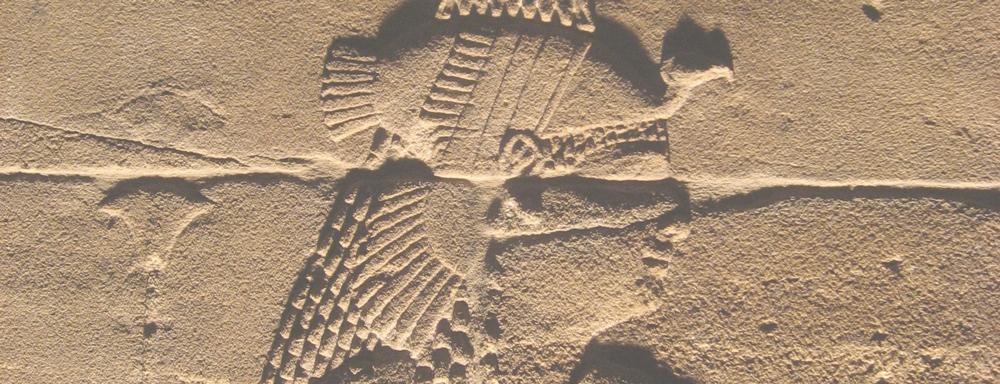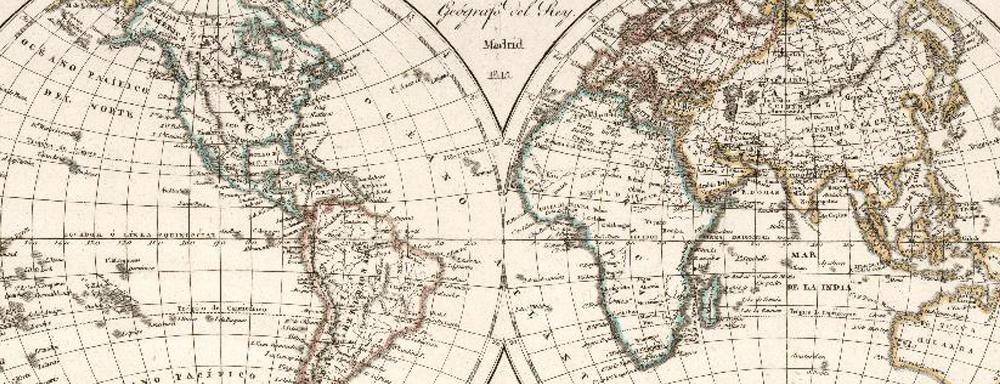Humanidades digitales
- Library
- Humanidades digitales
Advancement in the application of digital technologies to the area of Humanities is currently shaping a specific space for open communication aimed at responding to or reframing questions related to the humanities and the social sciences, and to the development and knowledge of cultural and social heritage.
Over the past years, the UC3M Library has collaborated with different research groups, providing the technical support necessary to develop specific digital platforms and products. In what follows, we present the projects developed until now:
The Gens Isiaca
“La gens isiaca in Hispania” provides a catalogue of more than 200 archeological remains from the Roman era devoted to Isis and other Egyptian gods, located in the Iberian Peninsula. The work is the result of collaboration between the UC3M Historiography and History of Religions research group and the UC3M Library Service.

Mithras in Hispania
"Mithras in Hispania" provides a catalogue accompanied by an in-depth study into the conditions that brought about its introduction in Hispania, at the end of the first century AD, a surprisingly early moment in relation to other regions of the Latin West. At the same time, the study examines the circumstances of its reception and normalization in the urban areas of the Hispania provinces. It focuses on the social and economic characteristics of its followers and analyzes the reasons it faded away so soon, at least in Hispania, which allows us to reject the assumption that Mithras was vanquished by Christ.
Mater Magna y Atis en Hispania
Cibeles es una diosa originaria de la región anatolia de Frigia. En el año 204 a.C. es integrada en el panteón de Roma, donde será conocida como Mater Magna o Mater Deum. A partir de entonces, rara vez será invocada como Cibeles. Junto a ella se desplaza su pareja mítica, el dios Atis. Todo parece indicar que este se convierte en el compañero predilecto en el mundo funerario de los hispanos a partir del siglo I d.C. Es entonces cuando su efigie aparece en estelas y monumentos funerarios, mucho antes de que se detecte la veneración de Mater Magna, cuya presencia en Hispania no se constata con anterioridad a los años finales del siglo I d.C.
Mater Magna y Atis en Hispania
DEpHis (Divine Epithets in Hispania)
"DEpHis (Divine Epithets in Hispania)" es un catálogo de aproximadamente 1300 inscripciones de carácter religioso de la Península Ibérica acompañado por un análisis clasificatorio de los elementos de la onomástica divina y los dedicantes implicados entre la República romana y el Bajo Imperio. Esta base de datos recoge los testimonios en latín, griego y lenguas prerromanas procedentes de las provincias hispanas . Esta trabajo es fruto del proyecto de investigación “Epítetos divinos: experiencia religiosa y relaciones de poder en Hispania” (EPIDI: HAR2017-84789-C2) que analiza los epítetos divinos atestiguados en inscripciones atendiendo a su función y uso, ubicación geográfica y la condición social de los dedicantes.
DEpHis (Divine Epithets in Hispania)
RIPOMPHEI
The objective of the project RIPOMPHEI “Recepción e influjo de Pompeya y Herculano en España e Iberoamérica” (The reception and influence of Pompeii and Herculaneum in Spain and Ibero-America) is to study the reception, repercussion and social and academic echo of the discovery of Pompeii and Herculaneum in Spain and in the Ibero-American countries between 1738 and 1936. That is to say, from the start of the 18th century excavations up to the outbreak of the Spanish Civil War.
SIRAR (Sylloge Inscriptionum Religionis Africae Romanae)
The objective of this project is to explore the way in which different small-scale and local religious purveyors and promoters filtered, appropriated, adapted, instrumentalized or even invented new religious offerings in North Africa, during the period between the Republic and the Low Empire. This project does not examine elements of coherence and homogeneity within a supposed shared religious worldview, but instead focuses on the particularities, discrepancies and distortions within the situational contexts.
SIRAR (Sylloge Inscriptionum Religionis Africae Romanae)
ALMAHISTO: The history storehouse
The Almahisto project has designed, developed and stored an institutional repository on the web for all the documents required to carry out historiographic research into the period between the Bourbon ascension to the throne in Spain (1700) and the end of the Spanish Civil War (1939).
ALMAHISTO: The history storehouse..

Cinemah.mov
This archive compiles examples of “cinema of mobility” in order delve further into audiovisual productions that deal with diaspora, migrants, exiles, refugees and displacement at an international level.
It is an initiative of the research project “Cartografías del Cine de Movilidad en el Atlántico Hispánico” (Cinematographic Cartographies of Mobility in the Hispanic Atlantic) (CSO2017-85290-P), financed by the European Regional Development Fund and the Ministry of Science, Innovation and Universities.
The Archive of Cinematic Mobility
Artes escénicas y discapacidad en España: Repertorio de ReDiArt-XXI
Mediante el presente repertorio, el grupo de investigación de ReDiArt-XXI trata de favorecer el engarce y la comunicación entre las compañías especializadas y el resto de la sociedad, así como de profundizar en la visibilidad de creaciones que se han probado artísticamente valiosas y que han ayudado a cambiar la sensibilidad colectiva, demostrando la necesidad de políticas culturales atentas a la diversidad.
Confiamos en que este catálogo de espectáculos, compañías y festivales facilite tanto a la comunidad universitaria como al conjunto de la sociedad valorar la creación escénica realizada por personas con discapacidad, y en que acerque potenciales públicos de las artes escénicas a esta clase de piezas, habitualmente menos conocidas.
ANTIMO. Antigüedad modernizada
El proyecto ANTIMO, “La Antigüedad modernizada: Grecia y Roma al servicio de la idea de civilización, orden y progreso en España y Latinoamérica” tiene como objetivo estudiar cómo la Antigüedad grecorromana ha sido utilizada como referente por aquellos que han pretendido transformar la sociedad bajo el lema de la modernización de la sociedad tanto en España como en América Latina.
ANTIMO, Antigüedad modernizada
Federico-Tena World Trade Historical Database
UC3M researchers in collaboration with the University of Pisa (Italy) have created an interactive geo-referenced database to analyze global trade during the last two centuries. Thanks to this new platform, it is possible to date the first economic globalization more precisely, which came about much earlier than previously thought- in the 1830s.
Federico Tena World Trade Historical Database

HISMEDI, History, Memory and Digital Society
History and Digital Memory, HISMEDI, encompasses two research projects that analyze the representation of the past disseminated through digital media and formats accessible to the public, whether blogs, websites, wikis, portals or social networks.
- HISMEDI – Civil War and Francoism
- HISMEDI – Political Transition to Democracy
- HISMEDI. History, Memory and Digital Society. Guide

Research in gender studies
Webpage created by the Humanities, Communication and Documentation Library of Universidad Carlos III de Madrid, with contents compiled and created within a research project by doctoral and volunteer students under the supervision of the Institute of Gender Studies and the Library.
Biographical Dictionary of Spanish elite college fellows (1560-1650)
This project compiles a database of biographies on Spanish elite college fellows between 1560 and 1650. At the same time, it has geo-located the institutions to which the colleges pertained.
Biographical Dictionary of Spanish elite college fellows (1560-1650)
Dictionary of Spanish University Law Full Professors
This page provides the results of a research study into the holders of full professorships in law between 1847, the date of the first career ladder for professorships, and 1942, the year that the Law Governing Universities was enacted. It entails a cohort of 565 individuals, many of them little known or unknown, who make up the living history of the liberal university.
Dictionary of Spanish University Law Full Professors (1847 - 1943)

José Manaut Viglietti. Exposiciones virtuales
La Biblioteca del Campus de Colmenarejo alberga la biblioteca, el archivo personal y una colección de 140 dibujos y óleos del pintor valenciano José Manaut Viglietti (1898-1971). Este legado es, además, un proyecto de colaboración de la Biblioteca y el Departamento de Humanidades de la Universidad Carlos III de Madrid, en el que se está trabajando desde 2003.
Se presenta esta primera exposición virtual que describe el período 1898-1944 y a la que posteriormente se unirán otras dos muestras que completarán su biografía.
Autoras imprescindibles: plumas de libertad
La biblioteca de la UC3M presenta "Autoras imprescindibles: plumas de libertad", una exposición virtual que narra la vida y obra de seis escritoras fundamentales en la historia de la literatura hispana: María de Zayas, Sor Juana Inés de la Cruz, Catalina de Erauso, Carolina Coronado, Flora Tristán y Ana Caro de Mallén.
@CIN-EMA
This platform sprang from the research project “Las relaciones transnacionales en el cine digital hispanoamericano: los ejes de España, México y Argentina" (Transnational Relations in Spanish-American Digital Cinema: the Axes of Spain, Mexico and Argentina) (CSO2014-52750-P). The project, with an international team of 32 researchers from centers in eight countries, focuses on production and circulation of Spanish American cinemas in the digital era.
